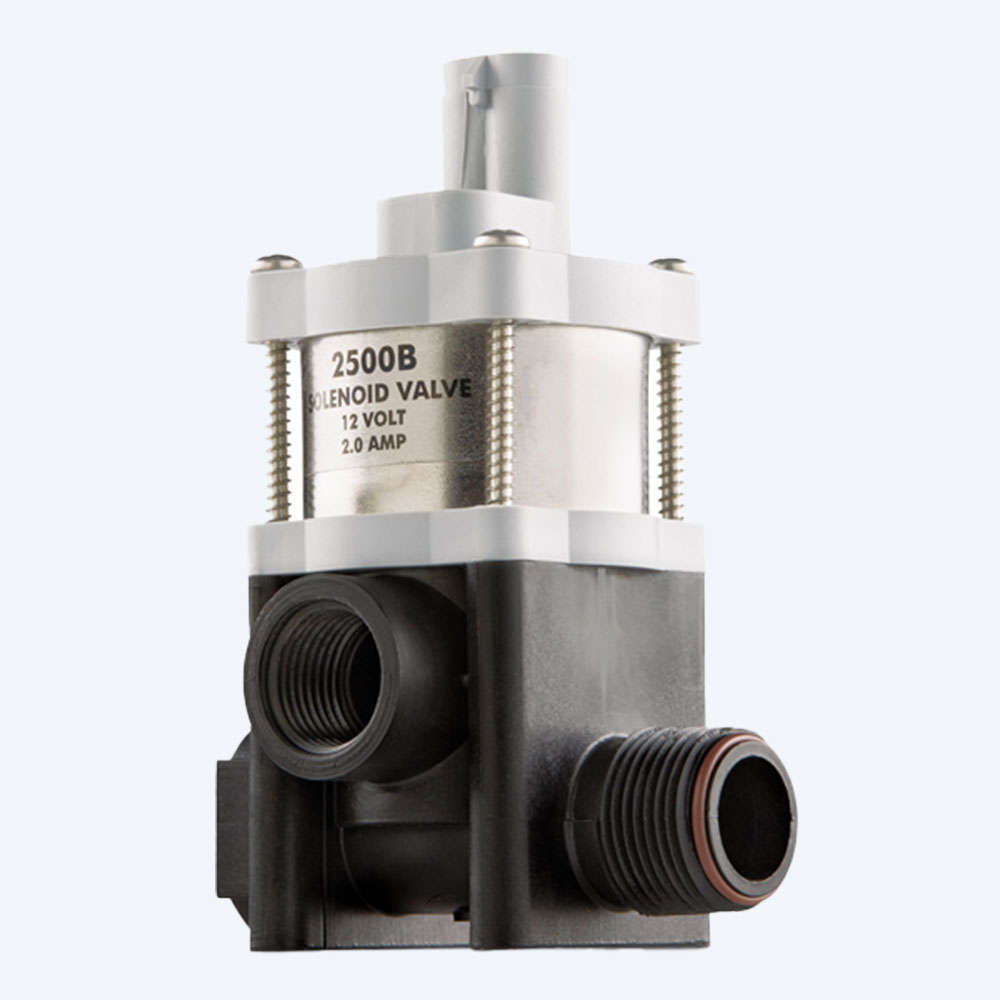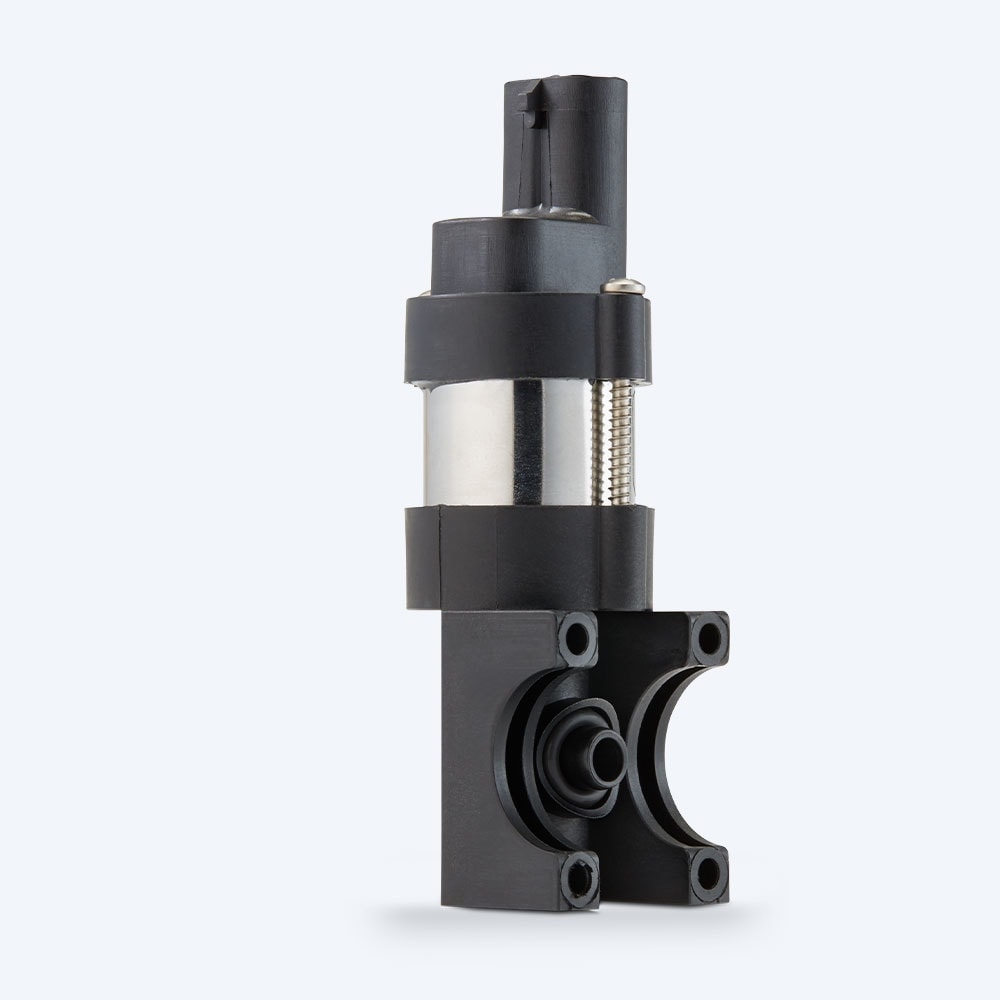Understanding 3-Way Solenoid Valves
Functionality of 3-Way Valves
A 3-way solenoid valve is an essential component for controlling fluid flow in various industries. These valves offer a cost-effective solution by minimizing the need for multiple two-way valves. They are designed with three ports: an inlet, an outlet, and an exhaust. This configuration allows the valve to control fluid or gas flow in three different directions, providing greater flexibility compared to 2-way valves (Electric Solenoid Valves).
The three ports in a 3-way valve are typically an orifice, a cavity, and a stop port, which are used for directional control. The term “3-way” refers to the valve’s ability to switch the direction of flow, making it ideal for applications that require precise control over fluid or gas movement (IQS Directory).
There are three functional types of 3-way solenoid valves:
- Normally-Closed (NC): The valve blocks flow from the inlet when not energized.
- Normally-Open (NO): The valve allows flow from the inlet when not energized.
- Universal: The valve can be configured for either normally-closed or normally-open operation.
Applications in Various Industries
Three-way solenoid valves find applications in a wide range of industries due to their versatility and efficiency. They are popular in industrial boilers, chemical mixing pipelines, steam distribution systems, and air conditioning devices. Additionally, they are used in complex piping systems containing primary and secondary loops (Pumps & Systems).
Here are some common applications of 3-way solenoid valves:
- Coffee Shops & Espresso Machines: Used for controlling steam and water flow.
- HVAC Systems: Regulating the flow of refrigerants and air.
- Automotive Industry: Controlling various fluids within vehicles.
- Water Treatment and Distribution: Managing the flow of water and chemicals.
- Pneumatic Systems: Regulating air flow in automation and control systems.
By understanding the functionality and applications of 3-way solenoid valves, you can make informed decisions when selecting the right valve for your specific needs. For more detailed information on the differences between 2-way and 3-way valves, visit our article on what is the difference between a 2-way and 3 way solenoid valve.
Types of 3-Way Solenoid Valves
When it comes to selecting a 3-way solenoid valve for your agricultural needs, understanding the different types and their functionalities can help you make an informed decision. Here, we will discuss T-Port vs. L-Port valves and the differences between manual and automated operation.
T-Port vs. L-Port Valves
T-Port Valves
T-Port valves are essential for splitting fluids from one source into two directions, allowing for the uninterrupted straight-through flow of service fluids (Pumps & Systems). These valves can have configurations such as two inlets and a single outlet port or one inlet and two outlets. They’re highly versatile and can divert fluids to two destinations simultaneously or allow for a straight-through flow.
| Configuration | Functionality | Example Application |
|---|---|---|
| Two inlets, one outlet | Splits fluid flow from two sources | Mixing different fertilizers |
| One inlet, two outlets | Diverts fluid to two destinations | Distributing water to multiple irrigation zones |
L-Port Valves
L-Port valves offer a different kind of fluid diversion. They can direct fluid flow to one direction at a time, unlike T-Port valves, which can handle multiple directions simultaneously. This makes L-Port valves ideal for applications requiring precise control over fluid direction (Pumps & Systems).
| Configuration | Functionality | Example Application |
|---|---|---|
| One inlet, one outlet (with diversion) | Directs fluid to a single destination | Switching between different crop rows |
Both T-Port and L-Port valves provide specific functionalities that can be beneficial depending on the application. Understanding these differences can help you choose the right valve for your needs. For more information on how these valves work, visit our article on what is a 3-way valve used for.
Manual vs. Automated Operation
Manual Operation
Manual 3-way solenoid valves are operated by hand, using a lever or dial to control the flow of fluids. These valves are simple to use and do not require any power source, making them ideal for smaller-scale applications or situations where automation is not necessary.
| Attribute | Manual Operation |
|---|---|
| Ease of Use | Simple, straightforward |
| Power Requirement | None |
| Cost | Lower initial cost |
| Responsiveness | Slower, depends on human operation |
Automated Operation
Automated 3-way solenoid valves use actuators to control the valve position. These actuators can be electric, pneumatic, or hydraulic, depending on the desired level of responsiveness and the actuation forces required (Pumps & Systems).
| Attribute | Automated Operation |
|---|---|
| Ease of Use | Highly efficient, minimal human intervention |
| Power Requirement | Requires power source (electric, pneumatic, hydraulic) |
| Cost | Higher initial cost |
| Responsiveness | Quick and precise |
Automated valves are ideal for larger-scale agricultural operations that require quick and precise control over fluid flow. They can be integrated into automated systems for seamless operation, reducing the need for manual intervention and improving overall efficiency. To learn more about the benefits of automated valves, check out our article on which of the following is the purpose of a three-way solenoid valve.
By understanding the differences between T-Port and L-Port valves and the options for manual and automated operation, you can select the best 3-way solenoid valve for your agricultural needs. For a deeper dive into the functionalities and applications of these valves, visit our article on 3 way solenoid valve.
Factors for Selecting 3-Way Valves
When it comes to choosing the best 3 way solenoid valve for your agricultural needs, there are several key factors to consider. This section will discuss material considerations as well as safety and environmental factors that should guide your decision-making process.
Material Considerations
Selecting the right material for your 3-way solenoid valve is crucial for ensuring optimal performance and longevity. Solenoid valves can be made from various materials, including plastic, steel, brass, bronze, and aluminum (IQS Directory). Each material has its own chemical properties to resist corrosion and withstand different media.
| Material | Characteristics | Ideal Use Cases |
|---|---|---|
| Plastic | Resistant to a wide range of media, not suitable for high temperatures | Mild chemicals, lower temperature fluids |
| Brass | Durable, good for water and air applications | General-purpose, non-corrosive media |
| Stainless Steel | Highly resistant to corrosion, suitable for food-grade applications | Corrosive substances, high-temperature fluids |
| Aluminum | Lightweight, good heat dissipation | Non-corrosive media, moderate temperatures |
| Bronze | Strong and durable, excellent corrosion resistance | Water, oil, and air applications |
Consider the chemical composition and temperature of the media being controlled. For instance, plastic valves are ideal for handling a wide range of chemicals but may not perform well with excessively hot fluids. For high-temperature applications, metal solenoid valves are generally preferred (Starter Solenoid).
Safety and Environmental Factors
Safety and environmental considerations are paramount when selecting a 3-way solenoid valve. The type of environment where the valve will be used plays a critical role in determining the appropriate material and design.
| Environment | Considerations | Recommended Material |
|---|---|---|
| Outdoor Exposure | Resistance to weather elements | Stainless Steel, Aluminum |
| High Temperatures | Heat resistance | Stainless Steel, Bronze |
| Corrosive Substances | Chemical resistance | Stainless Steel, Brass |
| Explosive or Dusty Conditions | Safety features, material strength | Stainless Steel, Bronze |
For applications involving beverages or food consumption, materials like stainless steel are recommended due to their safety and non-reactive properties. Additionally, for harsh conditions such as outdoor exposure, hot temperatures, and corrosive substances, specific materials and features are required to ensure the valve can withstand these conditions.
The cost of solenoid valves also varies based on the materials used, valve type, and supplier rates. Higher prices often indicate better quality materials suitable for tough conditions, while moderately priced valves are suitable for milder conditions (Starter Solenoid).
By carefully considering both material and safety factors, you can select the most appropriate 3 way solenoid valve for your agricultural needs, ensuring efficient and reliable operation in your crop spraying systems. For more detailed comparisons, you can explore our sections on what is the difference between a 2-way and 3 way solenoid valve.
Operational Aspects of 3-Way Valves
Response Time and Differential Pressure
For a 3 way solenoid valve, the response time is the duration required for the valve to transition from an open to a closed position, or vice versa. This is crucial, especially in applications like crop spraying where timely operation can impact the effectiveness of the process. The response time can vary based on several factors, including the valve’s design, the characteristics of the coil, air pressure, and the viscosity of the fluid being controlled. Direct-operated valves generally respond faster than indirect ones.
| Type of Valve | Response Time (ms) |
|---|---|
| Direct-Operated | 20 – 40 |
| Indirect-Operated | 40 – 60 |
| DC Valves | 30 – 50 |
| AC Valves | 20 – 40 |
Differential pressure is another important aspect to consider. It refers to the difference in pressure between the inlet and outlet of the valve. For crop spraying, maintaining the right differential pressure ensures that the fluid is dispensed evenly and effectively. Using the appropriate valve helps in managing this aspect efficiently.
Direct vs. Indirect Operation
When selecting a 3 way solenoid valve, understanding the difference between direct and indirect operation is vital. Direct-operated valves, also known as direct-acting valves, utilize a solenoid coil that directly moves the valve’s mechanism to open or close it. These valves are faster and more reliable for applications requiring quick response times.
Indirect-operated valves, on the other hand, rely on the system’s pressure to assist in opening and closing the valve. While they may have slightly slower response times, indirect valves are suitable for applications where higher flow rates are needed and where the system pressure can aid in the valve operation.
| Operation Type | Advantages | Disadvantages |
|---|---|---|
| Direct-Operated | Faster response time, Simple design | Limited by pressure and flow rate |
| Indirect-Operated | Handles higher flow rates, Utilizes system pressure | Slower response time, More complex design |
Understanding these operational aspects helps you make an informed decision when choosing the best 3 way solenoid valve for your crop spraying needs. For more detailed information, check out our article on what is the difference between a 2-way and 3 way solenoid valve.



